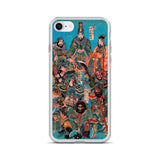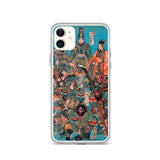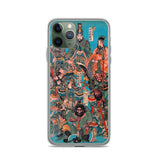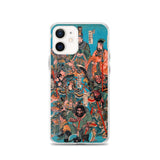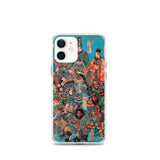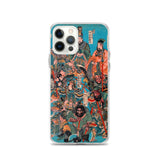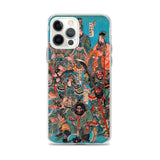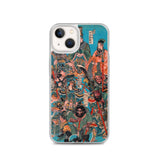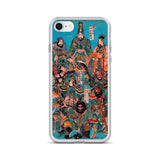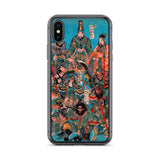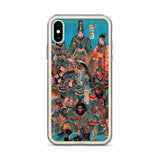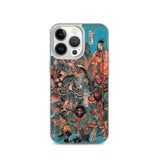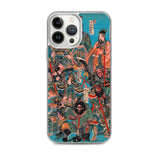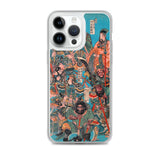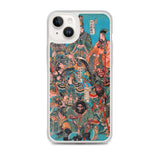'One Hundred And Eight Heroes of the Shuihuzhuan' by Utagawa Kuniyoshi, ca. 1830. First in a twelve-print set. This image is also available on:
The 'Shuihuzhuan', known in English as the 'Water Margin' is a Chinese novel written in the 14th century by Shi Nai'an, and is considered one of the four great classics of pre-modern Chinese literature. To summarize it loosely, it's 'Robin Hood' meets 'War And Peace': a historical novel set against the turbulent backdrop of 12th century China, in which a group of bandits and rebels gather in the marshes of Liangshan to fight corrupt officials, before being caught up in an invasion from the north by the Liao. The novel includes many individual narratives, which often only intersect towards the end. Although fictional, many of the characters are real historical figures and the basic plot - a group of bandits leading a rebellion before reconciling with the government to fight the Liao - is based on real events. Historians are still unsure how much Shi Nai'an invented himself and how much he borrowed from existing folklore (or even if Shi Nai'an is the actual author, since there are indications that it could have been written, or at least heavily edited, in the 16th century).
Kuniyoshi was a promising pupil under the Utagawa school master Toyokuni, but for the first ten years of his career he struggled to break into the highly competitive ukiyo-e market in Edo (Tokyo). He managed to obtain a few commissions for portraits of beautiful women and experimented with textile patterns, but at one point he was forced to become a second-hand tatami mat salesman to make ends meet. Close to abandoning art altogether, in 1827 he scored his first major hit with a commission for individual portraits of all one hundred and eight heroes from the 'Water Margin'. After the runaway success of the original individual portraits, he followed up with a set of group portraits around 1830, of which this is the first. Pictured in this image are (clockwise from top, using the Japanese pronunciation): Kohogi Soko, Chitasei Goyo, Sososho Tohei, Daito Kwansho, Kokusempu Riki, Botsuusen Chosei, Sobensho Koyenshaku, Hekirekkwa Shimmei, and Hyoshito Rinchu.
Kuniyoshi portrayed many of the characters in his One Hundred And Eight Heroes series with tattoos, which sparked the last great fashion for traditional Japanese tattoo art before it was banned by the Meiji government in the 1860s.
Product Details:
iPhone Case, available for 21 different variants
FREE SHIPPING
Average Delivery Time: 7 - 11 working days
• Solid polycarbonate back
• Flexible, see-through polyurethane sides
• .5 mm raised bezel
• Precisely aligned port openings
• Easy to take on and off
• Wireless charging compatible






















